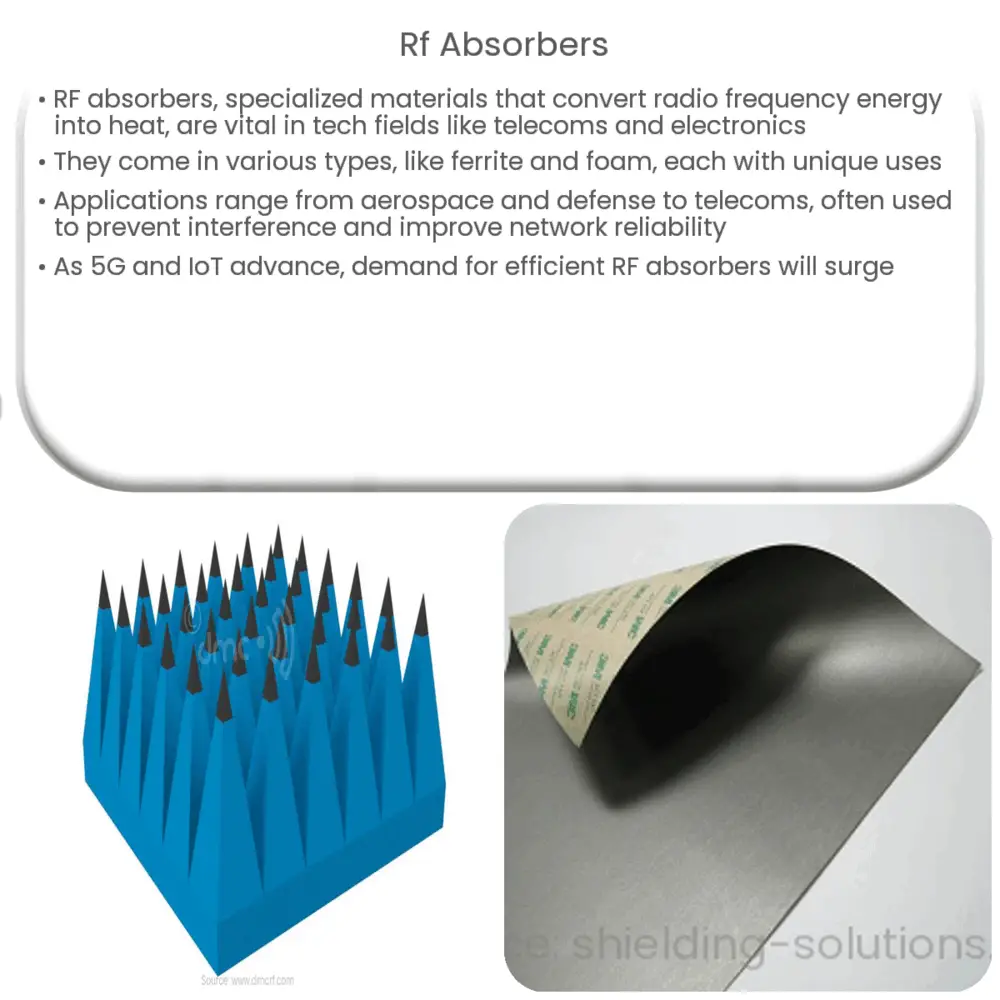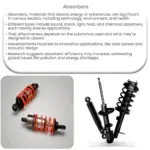Explore the world of RF absorbers, their working mechanisms, types, practical applications, and their critical role in future technologies.

Introduction to RF Absorbers
Radio Frequency (RF) absorbers play a critical role in a variety of technological fields, including telecommunications, signal processing, and electronic testing. They have unique properties that make them vital for many applications. This article seeks to unpack what RF absorbers are, how they work, and the different types available.
Understanding RF Absorbers
In the realm of electromagnetics, RF absorbers are specialized materials designed to absorb and dissipate radio frequency signals. RF signals are electromagnetic waves typically within the range of 3 kHz to 300 GHz. They are a type of non-reflecting material that intercepts RF energy, thus reducing or eliminating reflected energy that can cause interference. It’s the principles of RF absorbers that make stealth technology, signal processing and a host of other radio frequency applications possible.
Working Mechanism of RF Absorbers
RF absorbers operate by converting radio frequency energy into heat energy. The incoming RF energy, instead of being reflected back, is attenuated within the absorber material. This process is facilitated by the specific physical and chemical properties of the absorber, which often includes high magnetic permeability and/or high electric permittivity.
This ability to absorb rather than reflect RF signals is particularly important in environments where stray signals could potentially interfere with the operation of sensitive electronic equipment or the accuracy of measurements. Such environments include anechoic chambers (rooms designed to completely absorb reflections of either sound or electromagnetic waves) used in electromagnetic compatibility (EMC) testing.
Different Types of RF Absorbers
There are several types of RF absorbers, each with its unique set of characteristics and intended uses. Some are designed to absorb a broad range of frequencies (broadband absorbers), while others are tailored for specific frequency ranges (narrowband absorbers).
- Ferrite RF Absorbers: These absorbers are composed of ferrite, a type of ceramic material with high magnetic permeability. They are typically used for mitigation of electromagnetic interference (EMI) and in anechoic chambers.
- Foam RF Absorbers: Foam absorbers are lightweight and flexible, making them suitable for various applications. They are often used in the design and testing of antennas and radar cross-section (RCS) reduction.
Continuation of Types of RF Absorbers
- Pyramidal RF Absorbers: Named after their distinct pyramidal shape, these absorbers are widely used in anechoic chambers for their excellent absorption performance over a wide range of frequencies.
- Sheet RF Absorbers: Sheet absorbers, available in various thicknesses, can be applied to surfaces or inside electronic devices to reduce EMI. They are particularly valuable in compact electronic devices where space is a limiting factor.
RF Absorbers in Practical Applications
RF absorbers are critical in several applications across multiple industries. For instance, in the aerospace and defense sectors, RF absorbers are used in the design and testing of radar systems and stealth technologies. In the telecommunications sector, RF absorbers help prevent interference in signal transmission, thereby improving the quality and reliability of communication networks.
Moreover, in the field of electronics, RF absorbers are employed in the design of anechoic chambers used for EMC testing, ensuring electronic devices do not generate excessive electromagnetic noise that could interfere with other devices. These absorbers are also used for reducing EMI in compact electronic devices, enhancing their performance and reliability.
Future of RF Absorbers
As we advance into the era of 5G and beyond, the demand for efficient RF absorbers is projected to grow exponentially. These materials will be instrumental in facilitating effective signal transmission and reception, crucial for the realization of Internet of Things (IoT) and other smart technologies. Furthermore, the continuous pursuit for stealth technology in defense applications also presents a promising future for RF absorbers.
Conclusion
In conclusion, RF absorbers are indispensable tools in the realm of radio frequency technology. Their unique ability to absorb and dissipate RF energy has found significant applications across several fields, including telecommunications, defense, and electronics. As technology continues to evolve, so too will the capabilities and applications of RF absorbers. It is an exciting field, with many opportunities for innovation and development that could help shape the future of our increasingly connected world.



